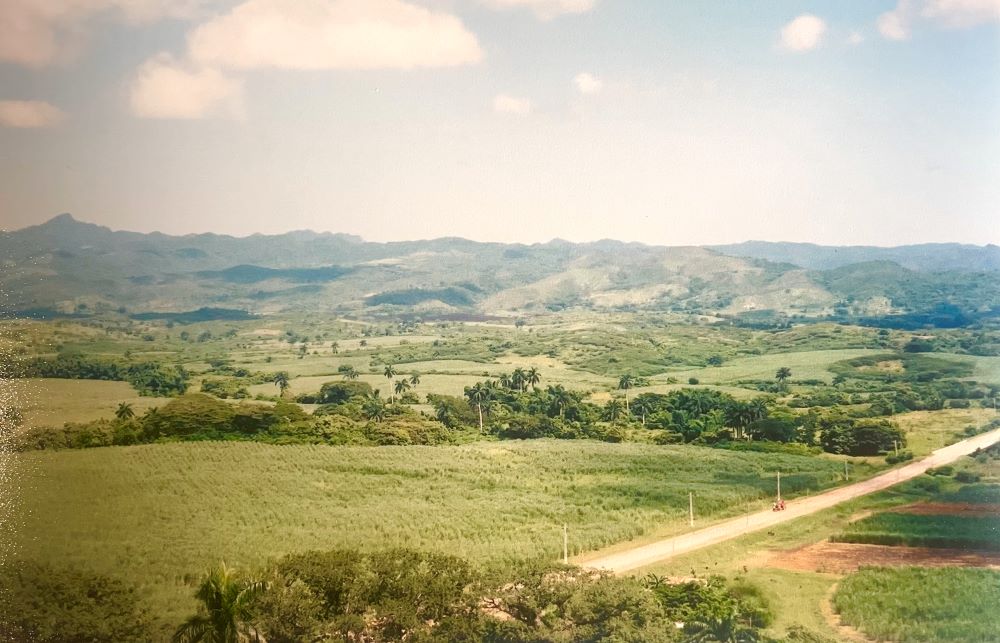A reference to the industrial nature of sugar production that arose from the late eighteenth to the mid-nineteenth centuries, the central lowlands of Cuba generated wealth for slave-owning planters on a scale that rivaled the monarchs of Europe. In January 1999, I took this photograph from a watch tower erected on the former estate of the Iznaga family. Staffed around the clock and at all times of the year, the tower allowed enslaved guards to sound the alert with an enormous bell any time they spied a fellow slave attempting to flee the vast sugar fields for the nearby Escambray mountains. Their reward, ranging from extra time off to freedom depending on the accuracy of their work, ensured a labor hierarchy among slaves that kept them socially divided and focused on the oppressor at hand—a fellow slave—rather than the master class, the real source of oppression. The picture not only reveals what escaped slaves were up against but also the enormous temptation of freedom that called them to the hills. Trinidad de Cuba, December 1999.
